UX STRATEGY, SITE ARCHITECTURE
Backstory
Wild Planet built a programmable remote-controlled tank: Spy TRAKR. It was pre-loaded with apps that could be swapped out. Kids would be able to download apps from a site or build them from scratch (based on TRAKR’s built-in sensors).
Wild Planet needed a site to explain TRAKR’s sophisticated features and host a new community of TRAKR users.
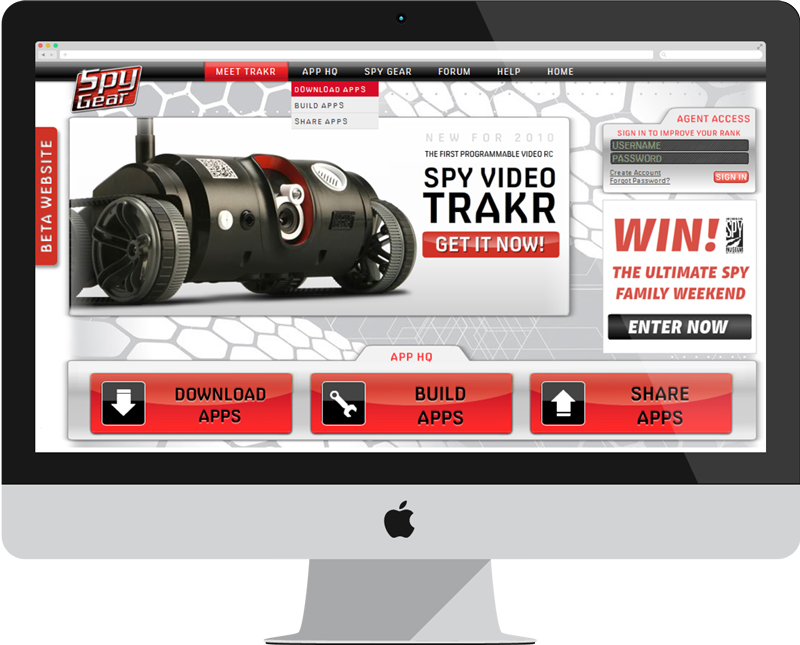
What I did
THE STRATEGY
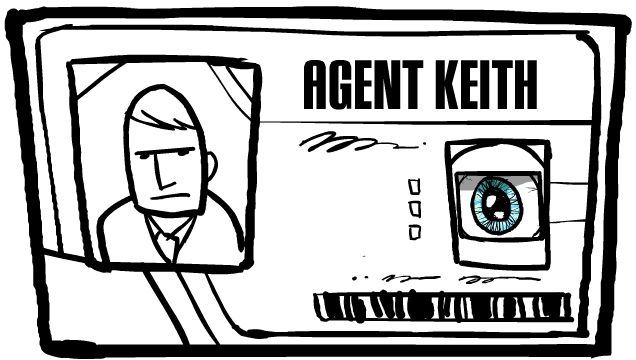
I wrote specifications for a ‘mission control’ site that let kids build, upload, and swap apps. “We’ll use story to reveal the vehicle’s full features. The site can be modeled after a virtual spy R&D lab. Kids can log into the high-security lab to ‘tune up’ TRAKR. Only registered agents will pass the retinal scan to gain access.”
We were particularly impressed with your creative direction and the thoroughness of the described scope.”
— Marketing Director, Wild Planet Toys
DESIGN: CODING WITH TRAINING WHEELS
Wild Planet wanted kids to be able to author apps. But how many kids could code in C? It was a big leap from out-of-the-box play to coding. As part of the plan, I proposed building an app ‘modulator’. An alternative to coding from scratch, kids would be able to ‘turn a dial’ to modify an app. A line of code would update on the fly to familiarize kids with C syntax.
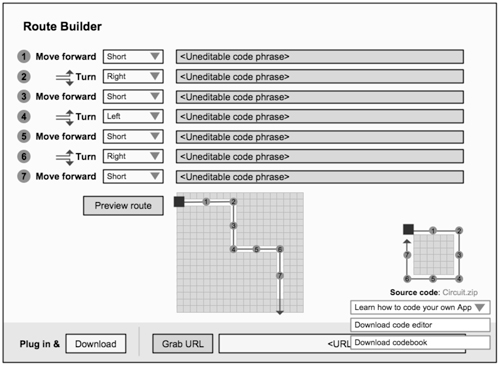
Kids could build a custom route to download and run on TRAKR. All paths were pre-compiled so the download was available instantly. (As such, the number of moves had to be limited.)
The concept was inclusive; now all TRAKR spies could boast a hack. Wild Planet was excited by the idea and asked for additional modulators. The wireframe below shows how the HUD itself (on the remote controller) could be hacked.
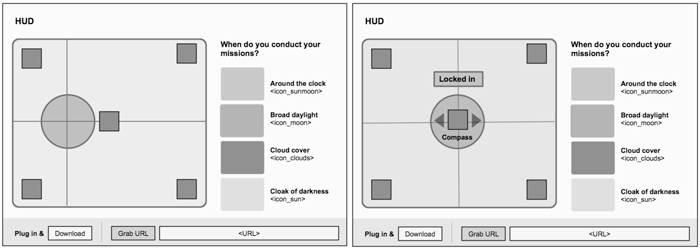
Kids could customize the controller’s head-up display. To make this simple customization spy-like, I correlated color themes to mission styles.
DESIGN: SUBMITTING AN APP
Wild Planet wanted the site to include a list of downloadable apps. But they also emphasized,”We’re not in the business of moderating apps.” We knew that the community features had to be easy to monitor and maintain.
I wrote specifications for a CMS that let Wild Planet vet and approve submitted apps. An integrated risk scale nudged trustworthy apps forward, and queued questionable apps for review. With additional support for peer moderation and ratings, this tank was fully loaded.
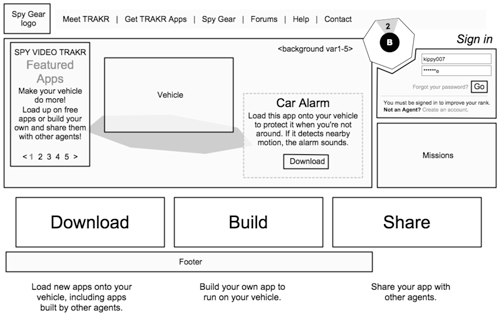
The home page invites kids to download, build, and share apps.

Kids could browse and filter apps by rating, newness, or favorite authoring agent.

A simple form made it easy to classify and submit custom apps. It was also the first moderation ‘gate’. Apps were auto-filtered for file size and inappropriate language.
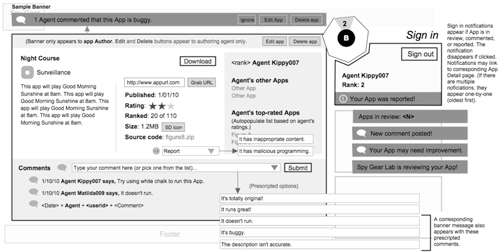
We integrated peer moderation to ease Wild Planet’s ‘policing’ duties. Kids could report malicious or buggy code. App visibility would change based on type or number of reports.
TRAKR Lessons
THE TRAKR LEGACY
We solved two big challenges:
- communicate TRAKR features simply
- empower non-coders to participate in the toy’s hackability culture
THE TRAKR ULTIMATUM
So what could be improved? Wild Planet anticipated 100s of app submissions. We designed accordingly; a list view made it easy to scan and sort apps. The issue? With few initial submissions, the list view felt empty. With many submissions, it was overwhelming (and utilitarian-looking).
In retrospect, I would have proposed a different interface. Big on visuals, light on text. I would have played with a dynamic tile view, writing rules to group apps by popularity, sensor, author, and context (outside, inside).
Site R.I.P.: In 2012, Wild Planet was sold to Spin Master. The TRAKR site was retired.